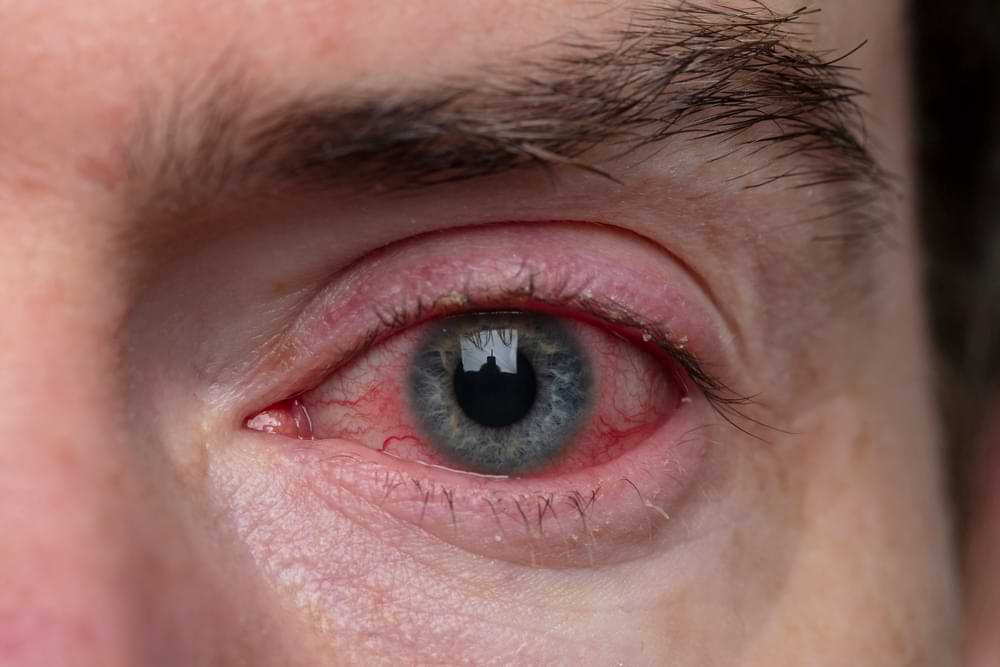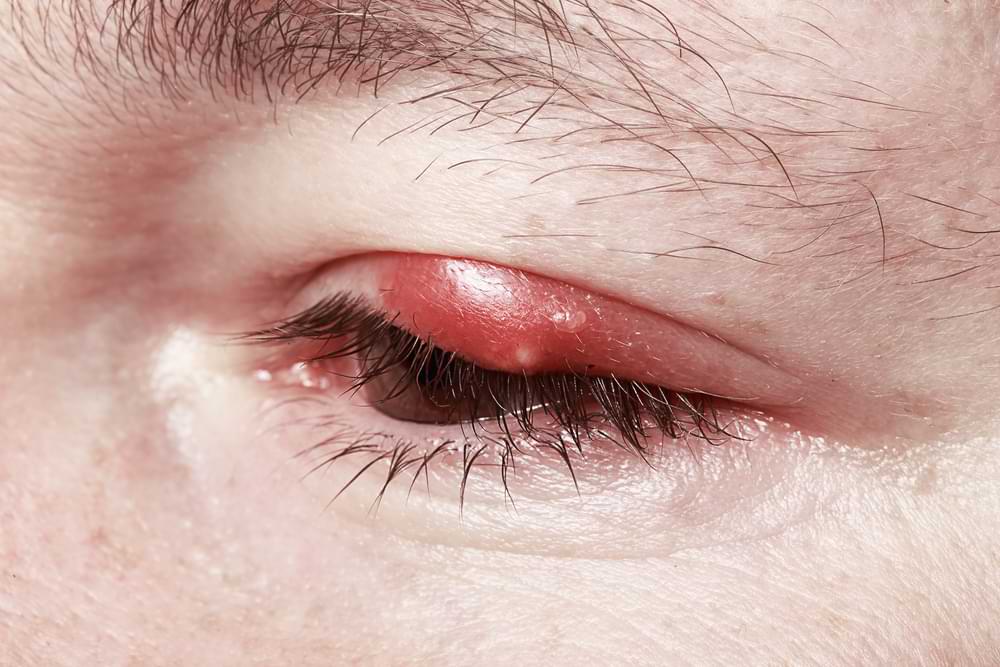Why Are My Eyelids Swollen? Blepharitis and How to Treat It.
If you’re dealing with persistent swollen eyelids, blepharitis might be the culprit. Blepharitis is a common eye condition, often characterized by inflammation at the eyelid margins, which not only causes physical discomfort but can also affect your confidence and daily interactions.
Here at our Canberra optometrist practice, we understand the impact these symptoms can have on your life, and we’re committed to providing effective, accessible solutions.
In this article I’ll explain how a quick visit to Junic Eye Care can bring relief to your swollen eyelids and help restore your comfort and self-confidence.
Causes of Swollen Eyelids Through Blepharitis
Factors contributing to blepharitis include:
- Meibomian Gland Dysfunction: Located within the eyelids, these glands produce the oil layer of the tear film. Dysfunction occurs when the glands become blocked or their secretions thicken, resulting in reduced quality or quantity of tear oil. This lack of proper lubrication leads to irritation, inflammation, and swelling of the eyelids.
- Eyelid Hygiene: Insufficient cleaning allows for the buildup of bacteria, skin flakes, and oils along the eyelid margin and lash line. This buildup exacerbates the inflammation associated with blepharitis. It’s particularly crucial for individuals who wear makeup to maintain rigorous eyelid hygiene.
- Environmental Factors: Our surrounding environment can play a significant role. Exposure to pollutants, dust, and certain chemicals can irritate the eyes and eyelids, leading to or worsening blepharitis.
- Age Factors: Hormonal shifts, often linked to menopause in women or changes of testosterone levels in men, can also affect the functioning of meibomian glands.
Symptoms To Watch For
Anterior blepharitis primarily affects the front part of the eyelid, where the eyelashes emerge. This condition often results from bacterial infections or, less commonly, allergic reactions. The bacteria that naturally live on the skin can overpopulate or produce irritants, leading to inflammation of the eyelid margins. In some cases, it’s linked to dandruff of the scalp and eyebrows, known as seborrheic dermatitis, which can cause similar flaky, scaly skin around the eyelashes.
Symptoms of anterior blepharitis typically include redness, itching, and burning sensations around the eyelids, along with crusting or greasiness at the base of the eyelashes. You may experience a mild stinging sensation in your eyes when you first wake up, as the secretions accumulate overnight.
Managing anterior blepharitis usually involves a combination of good eyelid hygiene practices, like regular cleaning of the lid margins, and in some cases, the use of antibiotics if an infection is present.
Posterior blepharitis, unlike its anterior counterpart, primarily affects the inner eyelid and is often linked to a dysfunction of the meibomian glands. These glands, located along the rim of the eyelids, are responsible for secreting oils that form the top layer of the tear film, crucial for keeping the eyes moist and comfortable. In posterior blepharitis, these glands either become clogged or produce oil of abnormal quality, leading to eye irritation and inflammation.
Common symptoms include a persistent feeling of dry eyes, a gritty or burning sensation in the eyes, and eyelid redness or swelling. Posterior blepharitis is often associated with skin conditions such as rosacea.
Cosmetics and Eyelid Inflammation
Makeup, especially when applied near the eyelid margins, can contribute to the blockage of meibomian glands and the accumulation of debris, both of which are common triggers for blepharitis. Eyeliners and certain eye shadows, if not removed thoroughly, can leave residue that harbors bacteria, exacerbating eyelid inflammation.
Furthermore, some cosmetic products contain ingredients that may irritate the sensitive skin around the eyes, leading to or worsening blepharitis symptoms. For individuals prone to blepharitis, it’s essential to practice careful makeup removal, preferably with gentle, non-irritating cleansers.
Additionally, reducing the frequency of cosmetic use around the eyes and opting for hypoallergenic products can mitigate the risk of blepharitis flare-ups. It’s always advisable for those with recurring eyelid issues to consult with an eye care professional for personalized advice regarding cosmetic use.
Eyes Are The Story is a cosmetic range specifically designed for healthy eyes which you may wish to investigate further if you are concerned about your makeup routines.


Introducing Blephex Eyelid Cleansing
Blephex Cleansing represents a significant advancement in the treatment of blepharitis and related eyelid issues. This innovative treatment involves a non-invasive, in-clinic procedure where we use a specialized hand-held cleaning device to gently exfoliate and clean the eyelid margins. Think of it as similar to a routine teeth clean at your dentist.
Some of the benefits of our treatment:
- Targets Root Cause: Blephex effectively addresses the accumulation of biofilm, bacteria, and debris along the eyelid margin, which is often challenging to remove through regular home hygiene practices.
- Quick and Comfortable Procedure: The treatment is quick, usually completed within minutes, and is generally painless, with many patients experiencing a soothing sensation during the procedure.
- Immediate and Long-Lasting Benefits: Blephex provides immediate relief from irritation and discomfort, with regular treatments (recommended every 3-6 months) helping to maintain optimal eyelid health.
- Beneficial for Treating Dry Eye Syndrome: Eyelid cleansing helps unclog the Meibomian glands, allowing for better oil secretion, which in turn improves tear quality and reduces dry eye symptoms.
- Ideal for Contact Lens Wearers: By keeping the eyelids clean and free from bacterial overgrowth, Blephex can reduce the risk of infections like conjunctivitis or keratitis, which are more prevalent among contact lens users.
- Reduces Anterior and Posterior Blepharitis: Through cleaner eyelids, patients can expect a lower incidence of bacterial infections, reduced inflammation, and improved comfort.
Our clinical Blephex eyelid cleansing treatment is an ideal solution for anyone seeking a more effective, professional approach to managing their eye health.
Demodex Mites and Swollen Eyelids
Blephex treatment can be effective in managing issues related to Demodex mites. These are microscopic parasites that live in hair follicles, including the eyelashes, and are known to be a contributing factor in some cases of blepharitis. They can cause irritation, inflammation, and other uncomfortable symptoms around the eyelids. By thoroughly cleaning the eyelids, Blephex can help reduce the population of Demodex mites and their associated waste products, thereby alleviating the symptoms they cause.
In some cases, we may recommend additional anti-Demodex treatments such as tea tree oil-based cleansers alongside Blephex for more comprehensive management.
Conclusion
In summary, while blepharitis can be an uncomfortable and persistent condition, effective solutions like Blephex Eyelid Cleansing are available at Junic Eye Care.
If you’re in Canberra and struggling with swollen eyelids, don’t hesitate to contact us for a consultation.
Our eye care team is committed to providing personalized and professional eye care. You’ll find our clinic conveniently located in the Molonglo Health Hub, just a short 10 minute drive from central Canberra, with plenty of free parking when you get here.
To visit our optometry practice, click the “Book Online” button at the top of the page or call (02) 6152 8585 today.
10 Frequently Asked Questions About Blepharitis and Blephex Treatment
1. What is Blepharitis and what causes it?
Blepharitis is an inflammation of the eyelid margins, often caused by bacterial infections, meibomian gland dysfunction, allergies and other factors.
2. How do I know if I have Blepharitis?
Common symptoms include red, swollen eyelids, crusty eyelashes, a gritty feeling in the eyes, or a stinging sensation in the eyes when you first wake up.
3. Is Blepharitis contagious?
No, Blepharitis is not a contagious condition.
4. Can Blepharitis lead to more serious eye problems?
If left untreated, Blepharitis can lead to more severe eye conditions like corneal inflammation or eyelid skin damage.
5. What is Blephex Eyelid Cleansing?
Blephex is a clinical procedure that involves the use of a specialized tool to thoroughly and gently clean the eyelids, removing buildup and bacteria.
6. Is the Blephex treatment painful?
No, the Blephex procedure is generally pain-free and is often described as being quite soothing.
7. How often should I undergo Blephex treatment?
The frequency can vary, but it’s typically recommended every 3-6 months, depending on the severity of your symptoms.
8. Does Blephex clean both UPPER and LOWER eyelids?
Yes, Blephex cleansing is typically applied to both the upper and lower eyelids. The treatment is designed to thoroughly clean the entire eyelid margin, where most of the issues related to blepharitis and other eyelid-related problems tend to occur
9. Are there any side effects of Blephex treatment?
Side effects are rare and usually mild, such as temporary redness or irritation immediately after the procedure.
10. Do you BULK BILL Blephex Cleaning treatments?
Blephex Cleansing isn’t covered by Medicare but your private health insurer may cover it. You will need to check your insurance policy.

CANBERRA OPTOMETRIST
Juliet obtained her Doctor of Optometry degree from the University of Benin, Nigeria in 2006. She completed an internship programme before migrating to Australia, where she completed a master’s degree in public health at the University of Sydney in 2014. Following this, Juliet obtained a Master of Orthoptics from the University of Technology Sydney (UTS) in 2017.
Juliet has completed her competency in optometry examination with OCANZ (Optometry Council of Australia and New Zealand), and obtained her ophthalmic prescribing rights from ACO (Australian College Of Optometry Victoria). Juliet has worked in various positions, including retail Optometry, the Ophthalmology Department at Canberra Hospital, and more recently, at the John Curtin School of Medical Research (ANU).
As a dedicated Canberra optometrist, Juliet is passionate about helping people with low vision, and binocular vision anomalies hence her interests in Low Vision Rehabilitation, Eccentric Viewing Training and Paediatric optometry.

